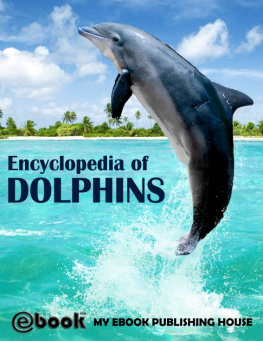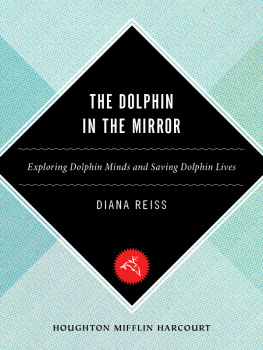Dolphin
Alan Rauch

REAKTION BOOKS
In Memoriam: Brigitte, Fanny, & Judith,
Residents of the Montral Aquarium, c. 19671980
Published by
REAKTION BOOKS LTD
33 Great Sutton Street
London EC1V 0DX, UK
www.reaktionbooks.co.uk
First published 2014
Copyright Alan Rauch 2014
All rights reserved
No part of this publication may be reproduced, stored in a retrieval system or transmitted, in any form or by any means, electronic, mechanical, photocopying, recording or otherwise without the prior permission of the publishers
Page references in the Photo Acknowledgements and
Index match the printed edition of this book.
Printed and bound in China by C&C Offset Printing Co., Ltd
A catalogue record for this book is available from the British Library
eISBN: 9781780231259
Contents

A bottlenose dolphin performing.
Preface
About 35 million years ago, the creatures we now know as dolphins abandoned the security of land for a life entirely in the ocean. It seems as unlikely an evolutionary move as one can imagine, but it was obviously a successful one; only 10 million years later dolphins became essentially the same creatures as they are now, and they are still going strong. By contrast, human precursors only began to emerge 2 million years ago and Homo sapiens did not appear until a few hundred thousand years ago. Bipedal and quintessentially earthbound, humans occupied a world foreign from their cetacean cousins, and so, it would seem, there was every reason for the two groups to be oblivious to each others existence. And yet, despite the fact that humans and dolphins developed in what might be called these two solitudes, the dolphin is one of the most beloved animals in human history.
The paradox of the association between humans and dolphins is not simply that dolphins are totally aquatic animals whose environment necessarily prevents the kind of companionship and even mutual knowledge that humans share, say, with dogs. The divergence between these two groups is even more fundamental in that the very traits that all mammals supposedly have in common hair, mammary glands and even general body shape have either disappeared or are entirely concealed in cetaceans. The fact that biology teachers and aquaria staff feel obliged to repeat, toall who will listen, that the dolphin is a mammal, underscores how completely alien these creatures can appear to us.
Yet in the esteem of the public at large, even among individuals who appear to be completely indifferent to animals, dolphins are almost universally beloved. With very rare exceptions, dolphins hardly ever get a bad press and when they do, humans accept the blame for having put them in captivity or for creating unacceptable environmental stresses.
Dolphins are, in a word, charismatic. They seem to have it all: intelligence, good looks, refinement and a winning (if not voluntary) smile. And, as anthropomorphic as these perceptions may be, they are not easily refuted. The difficulty stems, in part, from how little we know about dolphin biology, behaviour and communication. Scientific research has made considerable strides in the last five decades, but ultimately dolphins make their home at sea, where humans are, relatively speaking, clumsy. In captivity (a thorny issue in its own right), their intelligence impresses us enough to pursue ethical standards with regard to welfare and research, in contrast to some of the unfeeling techniques used in the past.
As much as we tout humandolphin companionability, there are serious blemishes in our track record with these animals. Foremost among our faults in studying dolphins (and this might be said of virtually all animals) is that they are not, as we once thought, puzzles to be solved. These are animals, not puzzles, and there are no answers at the back of the dolphin book to confirm or refute our findings. Rather, we have in the dolphin a very real and complex organism that defies the neat and idyllic image that humans have constructed for it. The purpose of this small book is to engage that complexity in as many different ways as possible and to explore our shared fascination and appreciation of the group called dolphins.

| A dolphin sculpture, constructed of lemons and oranges, created for the annual Lemon Festival in the French coastal town of Menton. |
Much of the dolphins reputation, in terms of its relationship with humans, has been predicated on four factors: intelligence, aesthetics, proximity and disposition. While the idea of what intelligence actually means has never been (and surely will never be) resolved, the idea that dolphins are socially and cognitively complex creatures is central to our understanding of them. When we see them out at sea they are often travelling in large groups (pods), and no less often hitching a ride on the bow waves of boats and ships. Whats more, dolphins can be highly vocal and clearly seem to be communicating, often raucously, with each other, if not also with us. We may not have an adequate working definition of the term, but dolphins do appear to be very intelligent.















